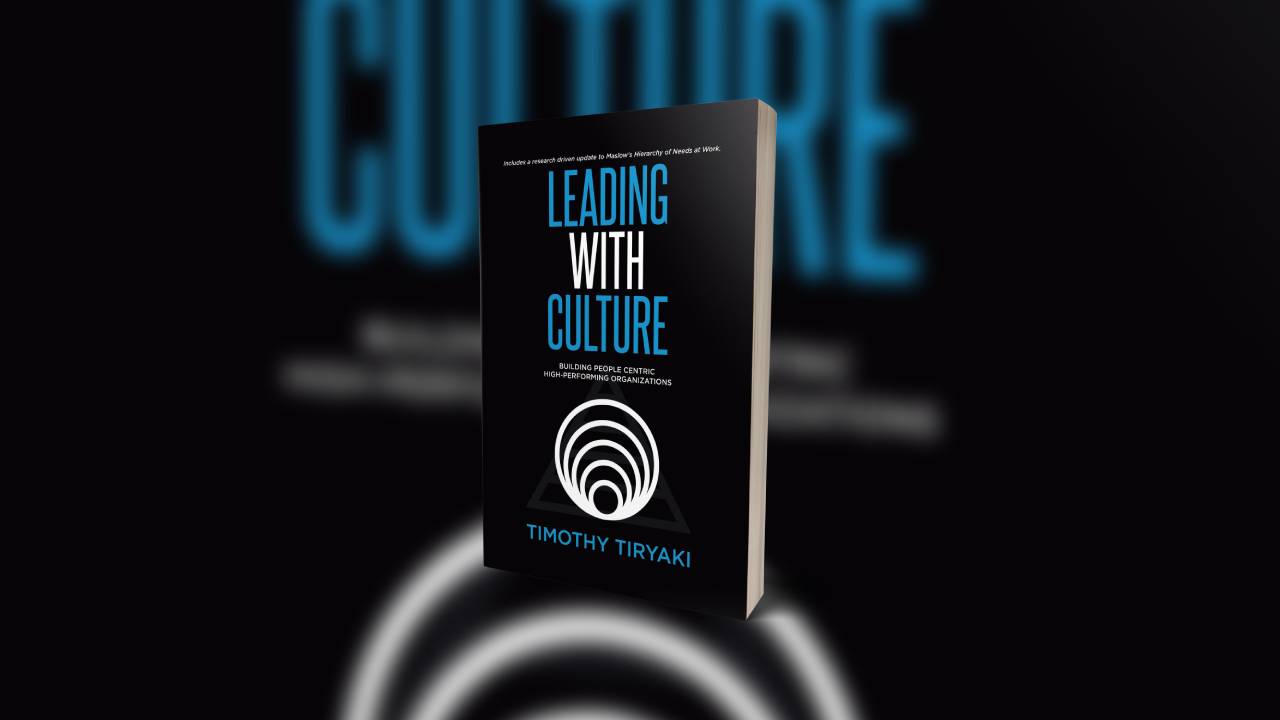EN: Welcome, Timothy Tiryaki, to discuss your latest book, “Leading With Culture.” In one of your chapters, you argue that “Culture Eats Strategy for Breakfast.” Could you expand on this concept?
TT: Absolutely. This phrase, often attributed to Peter Drucker, encapsulates the idea that while strategy is important, the culture of an organization plays a critical role in its success. The pandemic has highlighted that products and services alone aren’t enough. It’s about bringing the right people together, nurturing the right culture, and equipping them with the right technology. This trio forms the foundation of sustainable development and delivery in any organization.
EN: How do you believe leaders should approach building a workplace culture?
TT: Leaders play a pivotal role in shaping workplace culture. They must act as mentors and coaches to their teams. During Covid-19, I conducted extensive research on the changing needs of employees in a remote work environment. I found that many leaders recognize the importance of culture, but there’s a lack of understanding on how to effectively cultivate and lead it. It’s crucial for leaders to realize that culture is more than just corporate values; it’s a living, breathing aspect of the workplace that they must actively shape and guide.
EN: What are the common challenges leaders face in understanding and leading with culture?
TT: Many leaders rely on cues from HR when it comes to managing culture. There’s a significant need to build literacy and language around this topic because culture can either hinder or support the realization of strategic goals. Leaders often don’t have the training or the tools to fully grasp the complexity of culture and how it intertwines with strategy. Many leaders acknowledge the importance of culture but they struggle with the concept of how to lead with culture.
EN: How should culture be integrated into the strategic plan of an organization?
TT: Culture must be an integral part of the strategic plan. It shouldn’t be an HR-only responsibility; it’s up to all leaders to role model and promote it. This includes measuring culture through KPIs, making it part of leaders’ action plans, and creating space for team rituals that foster collaboration and cooperation. It’s about understanding and responding to team needs, which ultimately shapes a positive workplace culture.
EN: Can you elaborate on the key components of leading with culture as outlined in your book?
TT: Certainly. Leading with culture involves several key components:
Inclusion in Strategic Planning: Culture should be explicitly included in the organization’s core strategy, not just left to HR.
- Leaders’ Agenda: It’s essential for leaders at all levels to include people and culture initiatives in their action plans.
- Education for Leaders/Managers: Training should focus on building a common language and understanding of culture, as well as practical ways to foster it.
- Measurement and Management: Instead of just focusing on retention or turnover, leaders should use proactive measures like the Culture-Actualization Index I present in the book.
- Support with Coaching: Leaders need not only education in coaching but also specific coaching in Organizational Culture Coaching, which is a new field in coaching.
EN: What’s the ultimate goal of understanding and leading with culture?
TT: The goal is to create an environment where the culture supports and enhances the strategic objectives of the organization. It’s about building a workplace where employees feel valued, engaged, and connected to their work and each other, ultimately leading to higher productivity, innovation, and overall success.
EN: Thank you, Timothy, for sharing these insights. Your book seems like a must-read for any leader wanting to navigate the complexities of modern organizational culture successfully.
TT: Thank you. I believe that understanding and effectively leading with culture is key to the success of any leader in today’s fast-paced and ever-changing work environment.
About “Leading With Culture”
Leading With Culture is a groundbreaking book that delves into the transformative power of culture-focused leadership in the modern workplace. Drawing inspiration from Maslow’s hierarchy of needs, reimagined for the 21st-century post-pandemic landscape, this book presents original research that unravels the changing employee needs and the critical role of culture in meeting those needs.
Leading with Culture is available at Amazon.com USA and Canada in Paperback and Kindle formats.
About Timothy Tiryaki
Timothy is a global expert at the intersection of organizational culture, leadership, and coaching, and a sought-after executive advisor.
As the Founder of Maslow Research Center, he pioneers a human-centered leadership philosophy. With previous work experience from Procter & Gamble, Intel, and Great Place to Work Inc., Timothy’s research-driven unique frameworks decode current leadership challenges and bring actionable insights.
Timothy has led culture transformation projects for Fortune 500 companies, culture merger projects, trained & coached leaders from large organizations including the Army Special Operations and the Marine Corps.
Maslow Research Center: www.maslowresearch.com
Timothy Tiryaki: www.timtiryaki.com



